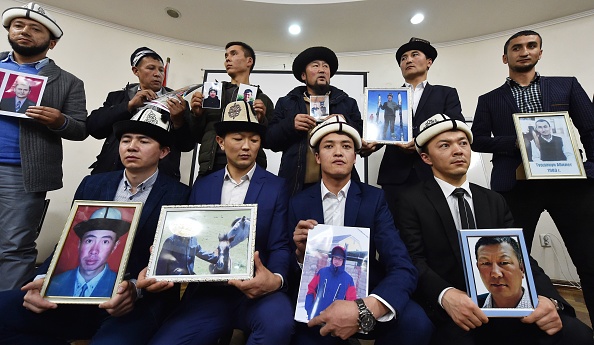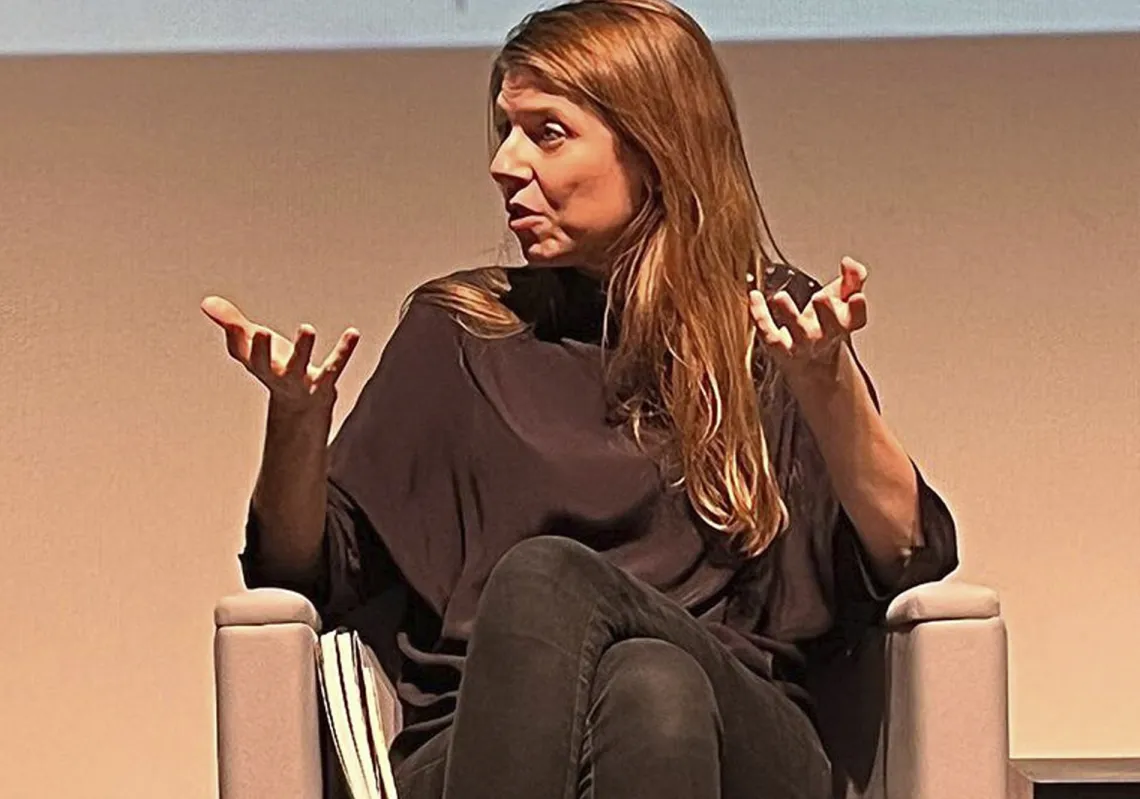The message reached me in early December via Signal, an encrypted messaging service that many Chinese use to bypass the closely monitored social media app WeChat. The day that many of us had feared was upon us: China’s best-known pastor, Wang Yi, and 100 of his followers had been detained. Their church of 500 members was closed—very likely forever.
In the two years since my last Foreign Affairs piece about religion in China (“China’s Great Awakening,” March/April 2017), such stories have become common. Churches closed, crosses removed, mosques demolished, Muslims sent to internment camps—the list of state-organized measures against religion in China has been growing. Seen against a backdrop of measures to limit nongovernmental organizations, tighten ideology, and lift term limits on President Xi Jinping, it’s easy to think that religion in China is being crushed by a strong state, diminishing in importance as a new powerful leader takes firm control of the country.
This view is tempting but wrong. China is not retreating to the era of high communism under Mao Zedong but lurching toward a messy future shared by many authoritarian states. Today’s China seeks not to marginalize competing groups and belief systems, the way Beijing did during the Mao era, but to co-opt them. Indeed, the events of the past two years show that for the first time in a century and a half, religion is firmly ensconced in the center of China’s social and political life.
THE IMPERIAL MODEL
If a Chinese past has found an echo in today’s events, it is that of the imperial era. A central characteristic of that period was that rulers tolerated a variety of beliefs but defined which were orthodox (zheng) and which heterodox (xie). This tradition underlies the state Xi inherits today, which has many religions, some of them even growing dynamically, but no religious freedom.
Today’s Chinese state, much like the imperial state, can be a generous benefactor, helping to rebuild temples, train new Buddhist and Taoist clergy, and set up international exchanges with the faithful in other countries. But toward those out of favor—today largely Christians and Muslims—the state can be harsh, setting up reeducation camps, demolishing mosques and churches, and persecuting leaders. To get an idea of the state’s wrath, consider the fate not only of Wang Yi, a Christian pastor, but also of his wife, Jiang Rong. Both have been charged with “inciting to subvert state power,” a crime that carries up to 15 years in jail.
Why has the state re-involved itself in religious life? The answer is the government’s realization that Chinese society is adrift, cynical, and bereft of values. Many countries, including the United States, share this lack of values, with large chunks of the population feeling that a lack of solidarity and shared beliefs has left many behind.
In China’s case, the contemporary malaise is compounded by events of the nineteenth and early twentieth centuries, when the country was invaded and almost carved up by foreign powers. In response, the country’s elites of that era turned on traditional religions, seeing them as superstitious, backward beliefs that were holding back the country’s modernization. Starting in the late nineteenth century, about 100 years of autocultural genocide destroyed around 90 percent of China’s religious infrastructure: temples, monasteries, ceremonial gateways, and ancestral shrines. Beijing, for example, went from an estimated 900 temples in the nineteenth century to about a half dozen by the early 1980s. During this period, the state under Mao made a short-lived effort to instill communism as a new system of values—even as a religion—but the attempt failed after a few decades of misrule.
The reform era, which began 40 years ago this past December, struck a new deal between state and society: citizens could make money through newly permitted capitalist-style reforms and be accorded substantial freedom in their personal life (provided they stayed out of politics, of course). The credo of this era was “To get rich is glorious,” which wonderfully captured the go-go prosperity of the time but proved to be a meager scaffolding to hold a country together.
During this period, the state tried to fill the vacuum by recycling Maoist-era heroes, but most people shut these efforts out like so much background noise. Essentially, the party abdicated: it was too weak to prevent an upsurge of religiosity from filling the void. The number of churches, mosques, and temples boomed, while unofficial groups such as Falun Gong and innumerable small sects and splinter groups proliferated.

Kyrgyz men hold portraits of their relatives as they attend a press conference in Bishkek on November 29, 2018. - Citizens of ex-Soviet Kyrgyzstan who fear relatives are being held in notorious 're-education camps' in China's Xinjiang region appealed on November 29, 2018 to the country's China-dependent government for help in freeing them. (Getty)
A TWO-PRONGED APPROACH
Reforms haven’t made just the Chinese people richer but the state as well. Flush with cash, it has rebuilt its apparatus of control, hiring armies of censors, police, and informants. And it has also poured resources into devising a new, more credible ideology. Part of this project is a renewed emphasis on communist values. But that is just one component of a hybrid ideology that also involves plowing resources into traditional religions.
The Chinese government has rehabilitated folk religion—an amorphous belief system that involves deified historical figures, ancestor worship, and traditional virtues of righteousness and honesty—from “feudal superstition” to “traditional culture” and subsidized it lavishly through programs to uphold “intangible cultural heritage.” This allows the state to support a huge variety of quasi-religious practices while claiming that it is simply backing culture.
The state’s attitude toward folk religion—and its similar largesse toward Buddhism and Taoism—contrasts strongly with its attitude toward China’s two other main religious groups, Christianity and Islam. The government mistrusts these two religions primarily because of their foreign ties. (This parallels a similar crackdown on nongovernmental organizations, which now are largely banned from receiving foreign money.).
The state’s fear of outside influences underpins new religious regulations announced in 2016, implemented in 2017, but only truly enforced in 2018. Although all religions, including Buddhism and Taoism, are admonished to avoid foreign ties, the measures are aimed mainly at Christianity and Islam.
The strains are especially clear with Christianity. Several aspects of Protestantism particularly concern Beijing, among them the faith’s speedy growth, from one million followers in 1949 to at least 60 million today; its popularity among the white-collar, educated elite that the country needs for its modernization; and the fact that probably two-thirds of Protestants worship in unregistered (also called “underground” or “house”) churches—in other words, churches outside government control.
In an effort to reassert authority over these groups, the government has removed crosses from the tops of churches in one region, while demolishing churches in several other areas—essentially a shot across the bow to urge them to register with the government.
The government has tried a different tactic with Catholics: diplomacy. Last year, it struck a deal with the Vatican, giving the pope some sort of veto power over future bishop nominees provided Rome recognized all of the current bishops appointed by Beijing. China has about ten million Catholics, half of whom worship in underground churches; in theory, the deal has made underground churches superfluous because Rome has now legitimized the churches run by the state.
Whether China’s Catholics will find this arrangement acceptable remains to be seen, but the deal shows Beijing’s determination to eliminate religious groups outside its control. For the Vatican, the stakes may be much higher, as the deal could become a litmus test for the reforms of Pope Francis and a way of attacking him. Already, the pope’s conservative critics are saying the deal shows a lack of backbone, lumping it in with his handling of the church’s sex scandals and slightly more liberal approach toward homosexuality.
The government’s attitude toward Islam has been even more problematic. Ten of China’s 55 non-Chinese minority groups, primarily the Hui and Uighurs in the country’s northwest and far west, are Muslim. Here, the issue isn’t just control but the forced assimilation of these peoples.
Officially, the state is pursuing a war on terrorism in its far western province of Xinjiang. Although the problem of violence there is real, all independent observers agree that the main cause of unrest is the heavy hand of the state, which for decades has pursued a policy of resource extraction and resettlement in order to increase the population of ethnic Chinese.
The resulting downward spiral of repression and violence has culminated in a recent campaign of repression aimed at the very practice of Islam. State authorities have forced Xinjiang stores to sell alcohol and tobacco, for example, and forbidden students from fasting during Ramadan. The repression seems to be spreading beyond Xinjiang to Hui communities in other parts of China, where authorities are tearing down Islamic domes, removing Arabic-language signs, and silencing the outdoor call to prayer.
Most shocking has been the return of something that indeed has echoes from the Mao era: reeducation camps. At first, the notion of such camps seemed like an unbelievable rumor, but the state has confirmed their existence, justifying them as needed to control extremism. In them, Muslims are essentially secularized by force, forbidden from anything seen as too religious.
A RETURN TO PRAGMATISM?
Until now, if one thought of large Asian countries where the mixing of religion and politics has caused strife and violence, India, Indonesia, or Pakistan might come to mind. In the future, this list could include China.
This need not happen. If the state steps back and takes a deep breath, it could avoid the conflicts that its current policies seem bound to create. One has only to think of the years of protest caused by the crackdown on Falun Gong to get an idea of how banning even one sect can become a messy, protracted affair. House churches have also been equally stubborn—just banning the Shouwang Church in Beijing in 2009 resulted in years of protests. And the inevitable backlash against such misguided policies as forcing Muslims to each pork and drink alcohol is scarcely imaginable.
Up until now, I’ve always believed in the pragmatism of China’s reform-era leadership, despite the brutality of many measures taken during that period. Yet China is no longer in the reform era. Instead, it is entering a new period, one that may make observers look back fondly on the relatively light touch of the country’s past leaders.









